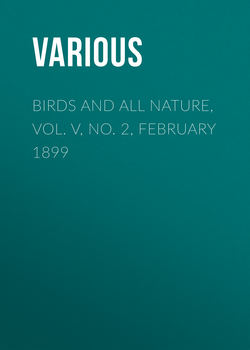Birds and all Nature, Vol. V, No. 2, February 1899

Реклама. ООО «ЛитРес», ИНН: 7719571260.
Оглавление
Various. Birds and all Nature, Vol. V, No. 2, February 1899
GINGER
SAP ACTION
EMERSON AND THE WOODPECKER STORY
THE CRAB-EATING OPOSSUM
WASHINGTON AND LINCOLN
THE GEOGRAPHIC TURTLE
NOSES
THE WHITE IBIS
THE HELPLESS
FEBRUARY
THE IRIS
THE LANGUAGE OF FLOWERS
THE PEACOCK
OWLS
THE DUCK MOLE
THE HIBERNATION OF ANIMALS
THE CAPE MAY WARBLER
SNOWFLAKES
A TIMELY WARNING
A WINDOW STUDY
FIVE LITTLE WOODMEN
THE COCOA-NUT
THE BLACK WALNUT AND BUTTERNUT
THE EDIBLE PINE
Отрывок из книги
IN order to understand this subject we must first ascertain the conditions under which sap is first produced, what it is, and how it circulates.
To do this we must first know something of the structure of those parts of the tree which serve as channels, or ducts, and those other parts which gather the sap and dispose of the waste after it has completed its mission.
.....
The layers of bark are much thinner than those of the wood and are not so readily distinguished. They are formed from the interior so that the oldest are on the outside. The older ones fall off, however, so that we cannot trace as many rings in the bark as we can in the wood, although one is formed in each for every season that the tree lives.
The roots of the tree spread out underground and are the agents through which the tree derives most of the moisture so necessary to its growth. They absorb moisture only at their extremities and usually spread to just such an extent that the water which falls off the outer branches of a tree during a rain, falls exactly where the tender rootlets can gather it up at once and hurry it back up the trunk of the tree. In ground that is springy, or naturally moist, the roots do not depend so much on the rainfall but reach out after moisture wherever it exists in the soil.
.....